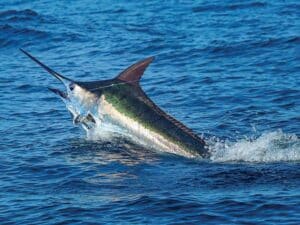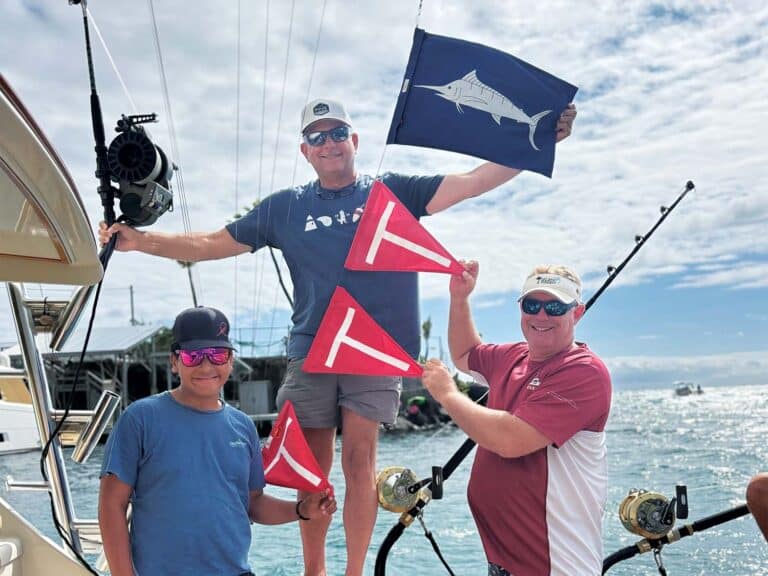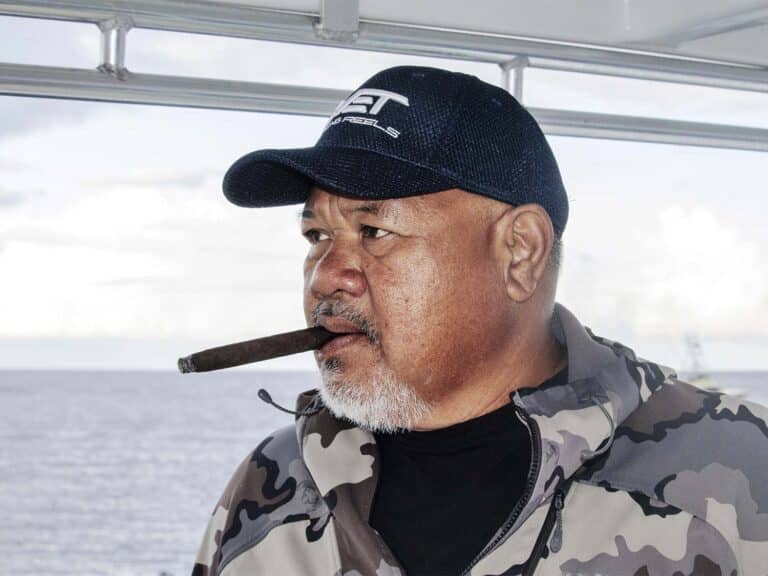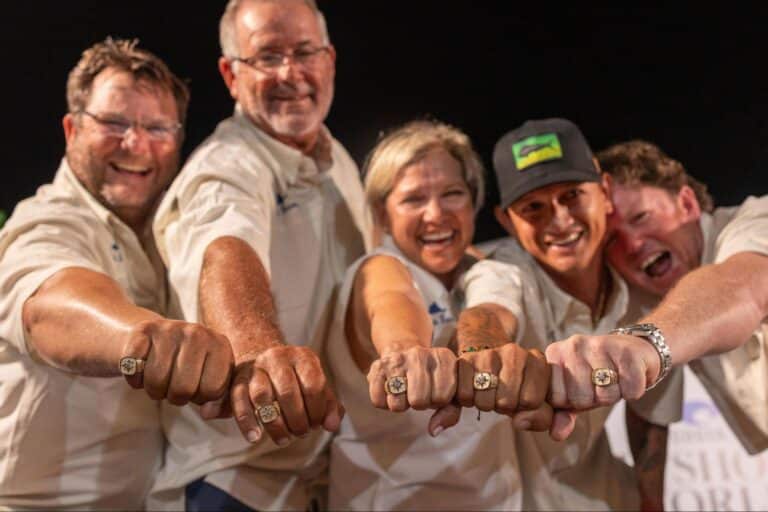
When I was fishing Australia’s Great Barrier Reef for big black marlin, I learned in that part of the world you had to tag the marlin for the catch to count, the theory being that the fish was within gaffing range when it was released. A friend of mine in Hawaii back in the 1970s caught and tagged 100 marlin in one season, and another captain who killed most of his fish did not believe him. My friend told the captain that he had two of the best crewmen working the deck, and the tag stick they used was like a wooden chamois mop handle, only about 5 feet long. He said with that short tag stick, his crew could have easily gaffed every one of the marlin they tagged and released.
Although they don’t generate as much information as the more comprehensive pop-up satellite tags, I still believe in tagging marlin with spaghetti tags from The Billfish Foundation. I know the recovery rate is very small, and sometimes it takes a few extra minutes to catch the fish, but if we can get some science back from the tag, I feel it’s worth the extra effort. With a TBF tag, the angler gets a really nice certificate, and it’s perfect for someone who’s caught their first marlin to have this to hang on their wall. I know sometimes with first-time anglers, it’s difficult to get the fish close enough to get a tag in, especially using light leaders, but we still try.
Watch: Learn to make a bonito strip teaser here.
Gray FishTag Research also has a tagging program for billfish as well as many other species. It has a website where you can name your fish and follow it in case it is ever caught again; GFTR is having great success with this program, especially because it has a good working relationship with charter boats around the world. This really helps to get the word out to many people who fish a lot—and those who fish only occasionally—to educate them about tag-and-release efforts. The recovery rate for species such as sharks and groupers, among others, is really good, and it saves the fish from being harvested for a mount.
Sailfish are hard to tag most of time, largely because they behave like squirming snakes behind the boat. Many years ago we had to tag them in the tournaments, and they got tagged everywhere but the shoulder—you just kept jabbing the tag stick at them until it hit something. Thankfully, most events have changed their rules requiring the mandatory tagging of billfish.
Read Next: Capt. Skip Smith chimes in about the rise of motherships.
Satellite tags are awesome, but they are very expensive. I have deployed many with blue marlin and swordfish, and I feel that the information they generate is well worth the cost. The IGFA has the Great Marlin Race every year, which is a partnership with the IGFA and Stanford University that allows them to deploy PSAT tags during billfish tournaments around the world—the fish generating the longest track wins the race. The goal of the program is to increase our understanding of the distribution, population and biology of marlin, while also encouraging anglers to participate in the research process. Since the program began in 2011, they’ve tagged more than 400 billfish in 21 countries; those tagged fish have logged over 218,000 nautical miles of movement. Pretty incredible.
The real winners of any tagging program are the marlin and sailfish—it’s worth a few extra minutes at the boat and a few extra scratches on the transom.







